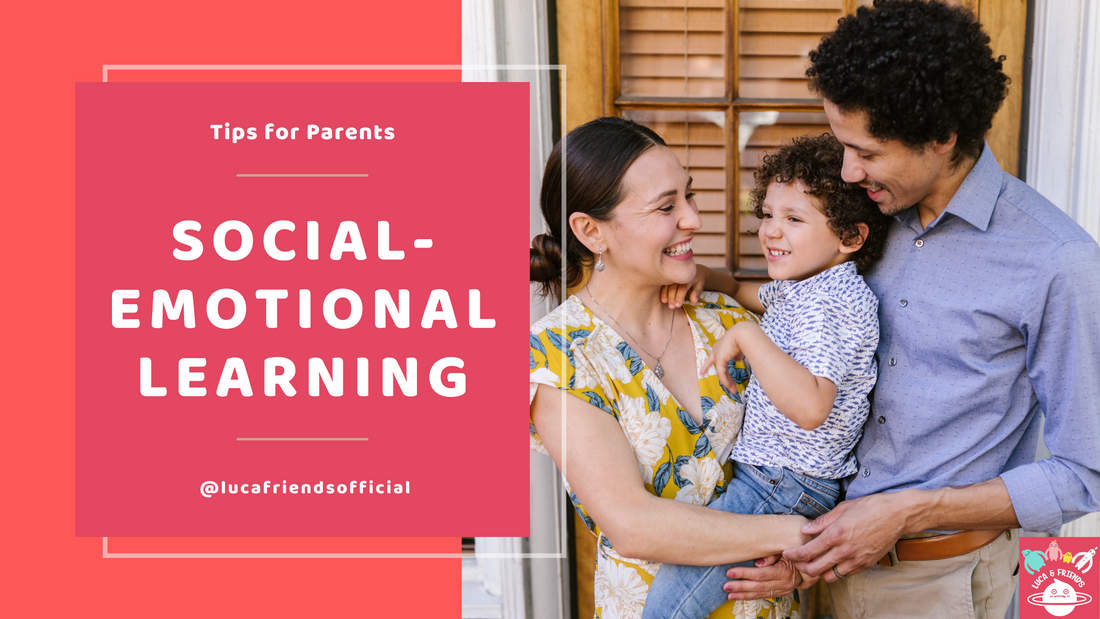
Promoting Social-Emotional Learning (SEL) With Games
Promoting Social-Emotional Learning (SEL) With Games
When children have fun while learning, they develop a positive association with education. This is why game-based learning can be so powerful. Not only do games give students an opportunity to see learning as a fun activity, but they also help students build crucial social-emotional learning (SEL) skills.
Self-awareness, self-management, communication, collaboration, and responsible decision-making are just some of the skills that fall under social-emotional learning, and they can all be improved through gameplay. Learning doesn’t always have to take place at a desk; students need opportunities to get active and enjoy the learning process.

What is Social-Emotional Learning?
SEL is an essential part of education and human development. So how is this applied in schools? SEL can be implemented in a variety of different ways. Educators promote SEL when they give students opportunities to develop the 5 competencies of social and emotional learning, which are listed by CASEL:
- Self-awareness
- Self-management
- Social awareness
- Relationship skills
- Responsible decision-making

What does SEL look like in the application? It looks different in each classroom; SEL can be applied to almost any topic during any activity. It can even be fostered through game-based learning (GBL) activities. In fact, educators are wondering if SEL is one of the major benefits of GBL. Robyn Hromek and Sue Roffey set out to answer this question in their 2009 study. Their study shows that games are a powerful learning tool for young people; this includes games played in person and online.
The Power of Game-Based Learning
Games offer challenges that promote creative thinking and problem-solving. Game-based learning is a practice that uses games as a vessel for learning. We all love games, but this is about more than just having fun and scoring points — it’s a research-based practice used to enhance instruction, cultivate collaboration, and meet specific learning goals. GBL doesn’t have to exist solely in the classroom; games are a great way to get kids to continue their education from home. With the COVID-19 pandemic forcing families to social distance and stay home, games offer opportunities for children to prevent learning loss even when schools are closed.
Roblox and Minecraft are examples of digital games that educators are using to promote learning through gameplay. If you’re skeptical about the educational benefits of video games, take a look at this 2013 study. The study found that children who played video games for 30 minutes a day over a two-month period showed an increase in thengrey matter compared to those who did not. The increase in the grey matter was observed in areas of the brain that involve spatial navigation, memory, fine motor skills, and strategic planning.

How Does GBL Foster SEL?
Games help children develop self-awareness by analyzing their strengths, weaknesses, and personal feelings. While students work through various game challenges and tasks, they realize which problems they can solve easily and which ones challenge them the most. Children also discover which games they like to play best which can indicate their preferred learning styles. For example, kinaesthetic learners might be drawn to games that require physical activities.
Children develop self-management skills during gameplay as they strategically plan their moves to earn points and win games. Children also manage their emotions while playing games, especially when they fail. Failure in gameplay is a low-stakes way to help students learn how to analyze their mistakes and plan for future success.
When children play education games, they are forced to think about their actions and practice responsible decision-making. Mistakes offer the chance for self-correction, which students can reflect on and use to make better decisions. Children might realize that they need to slow down and think deeper before making moves while playing games.
How to Choose the Best Games for Your Children
The right games for your kids will depend on their interests and age level. Children with interests in computers will probably love to play Minecraft and Roblox. Both of these games offer kids valuable learning experiences, but the only downside is the lack of physical activity. If you’re looking for games that will keep your kids engaged and get them up and moving, Luca & Friends is a great choice.

Luca & Friends is perfect for kids ages 4 - 8. Children will enjoy building STEM skills via immersive, interactive games. AI motion technology creates a unique experience where students physically connect to their learning process. All of the social-emotional learning skills students develop during gameplay can be utilized with Luca & Friends, with the added bonus of physical activity. Check out to discover how you can offer your children learning opportunities that support them academically, socially, emotionally, and physically!
Download Now for iPhone, and Android Devices.

